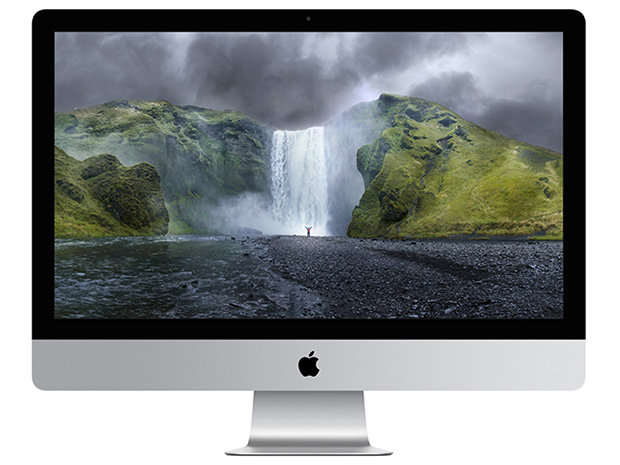'ZDNET Recommends': What exactly does it mean?
ZDNET's recommendations are based on many hours of testing, research, and comparison shopping. We gather data from the best available sources, including vendor and retailer listings as well as other relevant and independent reviews sites. And we pore over customer reviews to find out what matters to real people who already own and use the products and services we’re assessing.
When you click through from our site to a retailer and buy a product or service, we may earn affiliate commissions. This helps support our work, but does not affect what we cover or how, and it does not affect the price you pay. Neither ZDNET nor the author are compensated for these independent reviews. Indeed, we follow strict guidelines that ensure our editorial content is never influenced by advertisers.
ZDNET's editorial team writes on behalf of you, our reader. Our goal is to deliver the most accurate information and the most knowledgeable advice possible in order to help you make smarter buying decisions on tech gear and a wide array of products and services. Our editors thoroughly review and fact-check every article to ensure that our content meets the highest standards. If we have made an error or published misleading information, we will correct or clarify the article. If you see inaccuracies in our content, please report the mistake via this form.
Apple iMac with Retina 5K display review: Outstanding display, competitive price


Apple iMac with Retina 5K display review
pros and cons
- First workstation with 5K display
- Most powerful iMac ever
- Competitive price
- Elegant, all-in-one design
- No drive bays or upgrade slots
- Apple's upgrades are expensive
- Editors' review
- Specs
Creative users in fields such as design and photography have traditionally been Apple's most loyal customers, but in recent years the company has been accused of ignoring its professional customers as it focused on consumer products such as the iPhone and iPad. The recent introduction of an innovative new Mac Pro workstation -- after years of neglect for that product line - was intended to reaffirm Apple's commitment to its professional users. And now, somewhat unexpectedly, it has released a new version of the iMac -- the iMac with Retina 5K Display -- that's nothing less than a dedicated workstation for 4K video-editing and graphics applications.
Beyond 4K
At first glance, the new iMac looks identical to its predecessors, with an elegant all-in-one desktop design and a slimline 27-inch display that tapers to just 5mm around the edges. However, this latest model ups the ante considerably by introducing a new 5K display with a remarkable 5,120-by-2,880-pixel resolution -- that's four times the resolution of any of its predecessors.
That display really is unmatched by any of Apple's rivals, not just in its high resolution and sheer pin-point clarity, but also in the bright, vivid colours that it delivers. It will be ideal for photography and design work, but -- as with the new Mac Pro -- it's clear that Apple is very much focused on the emerging market for 4K (3,840-by-2,160-pixel) video editing.
There are, of course, a number of 4K monitors already available at quite competitive prices, but a 4K monitor still needs to scale the video down in order to view it within editing applications such as Adobe's Premiere Pro. By contrast, the iMac's 5K resolution allows you to view and edit 4K video at its native resolution without making any such compromise.
High DPI
One potential problem with ultra-high resolutions such as this -- which Microsoft refers to as High DPI -- is that interface elements on the main desktop or within applications can appear so small that they become almost unusable. That's certainly a problem with some Windows PCs that have High DPI displays.
Top ZDNET Reviews
However, Apple has years of experience with Retina displays in its MacBook Pro laptops, and has developed a scaling technology that increases the size of text and graphics so that they simulate lower resolutions. By default, the iMac's 5K display is set to 'look like' the 2,560-by-1,440 resolution of the standard 27-inch iMac, so existing iMac users won't notice any difference in the display unless they choose to switch to a different scaling setting. Third-party developers have also had plenty of time to adapt their Mac applications to these Retina displays, while the Windows versions of key apps, such as Adobe Photoshop, are still catching up with the arrival of High DPI displays.
Price and performance
Apple is often criticised for its high prices, but the 5K iMac is actually very competitively priced. Dell's forthcoming UltraSharp 27 Ultra HD 5K monitor -- with no computer attached -- is currently available for preorder at $2,499.99 (£1,594) but is widely expected to drop below $2,000 (£1,274) when it ships; the new iMac provides both a 5K display and a powerful computer for £1,999 (inc. VAT; £1,665.83 ex. VAT).
Applications such as 4K video-editing require plenty of power, so the 5K iMac is considerably more powerful than any of its predecessors. There's just one standard configuration for the 5K model listed on Apple's website, which includes a quad-core Intel Core i5-4690 running at 3.5GHz (3.9GHz in Turbo Boost mode), along with 8GB memory and a 1TB hybrid Fusion drive. And, to provide the graphics power required by the 5K display, there's an AMD Radeon R9 M290X with 2GB of video memory.
The standard 3.5GHz Core i5-4690 processor is only marginally faster than the 3.2GHz variant used in the standard 27-inch model, which is still on sale for £1,499 (inc. VAT; £1,249.17 ex. VAT). Consequently, Geekbench 3 reports raw processor performance of 12,500 points, which is only 11 percent greater than that of the standard iMac. However, the inclusion of the Radeon graphics card allows it to reach 91.9fps for OpenGL performance when running the Cinebench R15 benchmark -- almost 50 percent higher than the 62fps of the standard iMac.
A more traditional graphics workstation, such as Dell's Precision 7810, can still outpace the 5K iMac, with a Cinebench R15 OpenGL score of 147.6fps. However, that particular dual-socket Xeon-based system costs over £4,000 (ex. VAT) and doesn't include any monitor at all, which makes the 5K iMac look something of a bargain.
Upgrade Options
Although there's just one standard configuration available, Apple does offer numerous build-to-order options and upgrades. Video or photo-editing work really needs 16GB or 32GB of memory, which cost an extra £160 and £480 respectively when bought from Apple. There's just one processor upgrade available, with a quad-core i7 running at 4GHz costing an extra £200, while another £200 will also allow you to step up to a Radeon R9 M295X graphics card. That combination brings the total price to £2,879 (inc. VAT; £2,399.17 ex. VAT) which is still competitive given the inclusion of the 5K display. If you want to go the distance and add 1TB of flash storage for an extra £640, the price rises to a hefty £3,519 (inc. VAT; £2,932.50 ex. VAT).
Thankfully, you can convert the Fusion drive to 256GB of solid-state storage for no extra cost, and the iMac's four USB 3.0 and two Thunderbolt 2.0 ports allow you to add high-performance Thunderbolt drives, or less expensive USB drives as required.
Unfortunately there's little scope for further user upgrades. A small panel on the back of the monitor provides access to the memory slots, but the rest of the system is sealed, with no easy access to the hard drive or motherboard. There's no real need for spare drive bays, but the inability to upgrade the GPU in the future might deter some users who require a workstation with greater upgrade potential in the future.
Leader of the 5K pack
The new iMac's outstanding 5K display and improved graphics performance will certainly offer an attractive upgrade for Apple's creative users, and may well undercut sales of the more expensive Mac Pro. It's also good to see Apple making an effort to compete with its PC rivals by providing an all-in-one 5K workstation at a price that even the likes of Dell may struggle to match.
CNET's Take: Apple's 5K iMac impresses expert eyes (review)